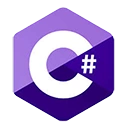Windows Forms is a graphical user interface (GUI) framework provided by Microsoft for creating desktop applications in C#. In this guide, you'll learn about Windows Forms and how to create interactive and user-friendly applications with it.
What is Windows Forms?
Windows Forms, often abbreviated as WinForms, is a part of the .NET framework that allows you to create Windows applications with a rich user interface. You can design and build windows, dialog boxes, buttons, textboxes, and other controls to create interactive desktop applications.
Creating a Windows Forms Application
Here's how to create a simple Windows Forms application in C#:
using System;
using System.Windows.Forms;
class Program
{
[STAThread]
static void Main()
{
Application.EnableVisualStyles();
Application.SetCompatibleTextRenderingDefault(false);
// Create and show the main form
Application.Run(new MainForm());
}
}
class MainForm : Form
{
public MainForm()
{
Text = "My First Windows Forms App";
Size = new System.Drawing.Size(400, 200);
Button myButton = new Button();
myButton.Text = "Click Me!";
myButton.Location = new System.Drawing.Point(150, 80);
// Subscribe to the button's click event
myButton.Click += (sender, e) => {
MessageBox.Show("Hello, Windows Forms!", "Greetings");
};
Controls.Add(myButton);
}
}
This code creates a simple Windows Forms application with a button. When the button is clicked, a message box with a greeting is displayed.
Designing the User Interface
Windows Forms provides a visual designer that allows you to create the user interface by dragging and dropping controls onto the form. You can set properties, handle events, and create a responsive application without writing extensive code.
Events and Event Handling
Windows Forms applications are event-driven. You can respond to user actions, such as button clicks or mouse movements, by handling events. The example above demonstrates handling the button's click event.
Additional Controls
Windows Forms offers a wide range of controls, including labels, textboxes, checkboxes, radio buttons, list boxes, and more. You can combine these controls to create complex and interactive applications.
Conclusion
Windows Forms is a powerful framework for developing Windows desktop applications with a rich user interface. You've just scratched the surface of what's possible. As you continue your journey into Windows Forms programming, you'll explore more advanced features and create sophisticated desktop applications.
Practice building and designing your own Windows Forms applications to gain expertise in creating graphical user interfaces. This framework is well-suited for a wide range of desktop software, from simple tools to complex applications.

